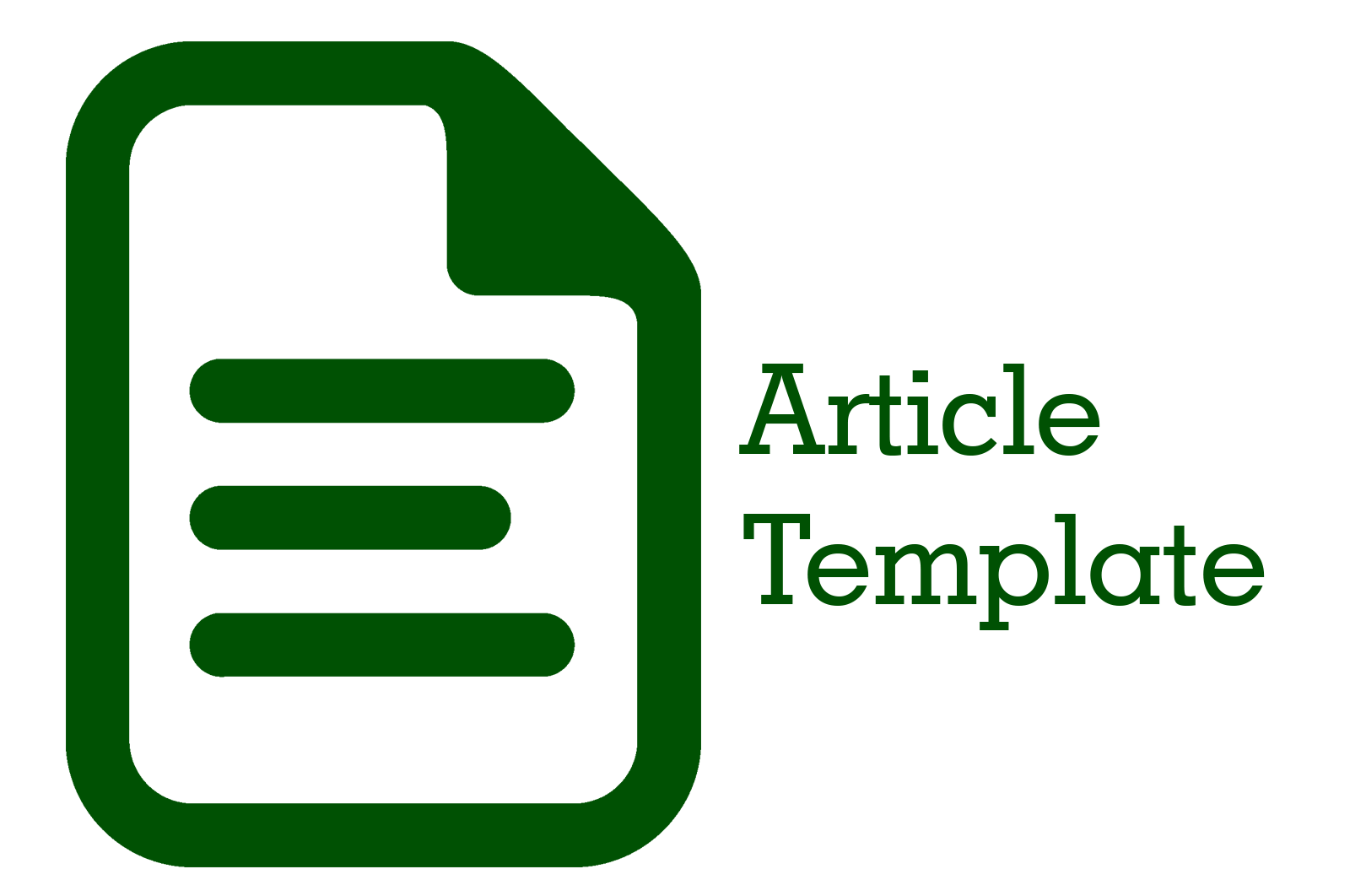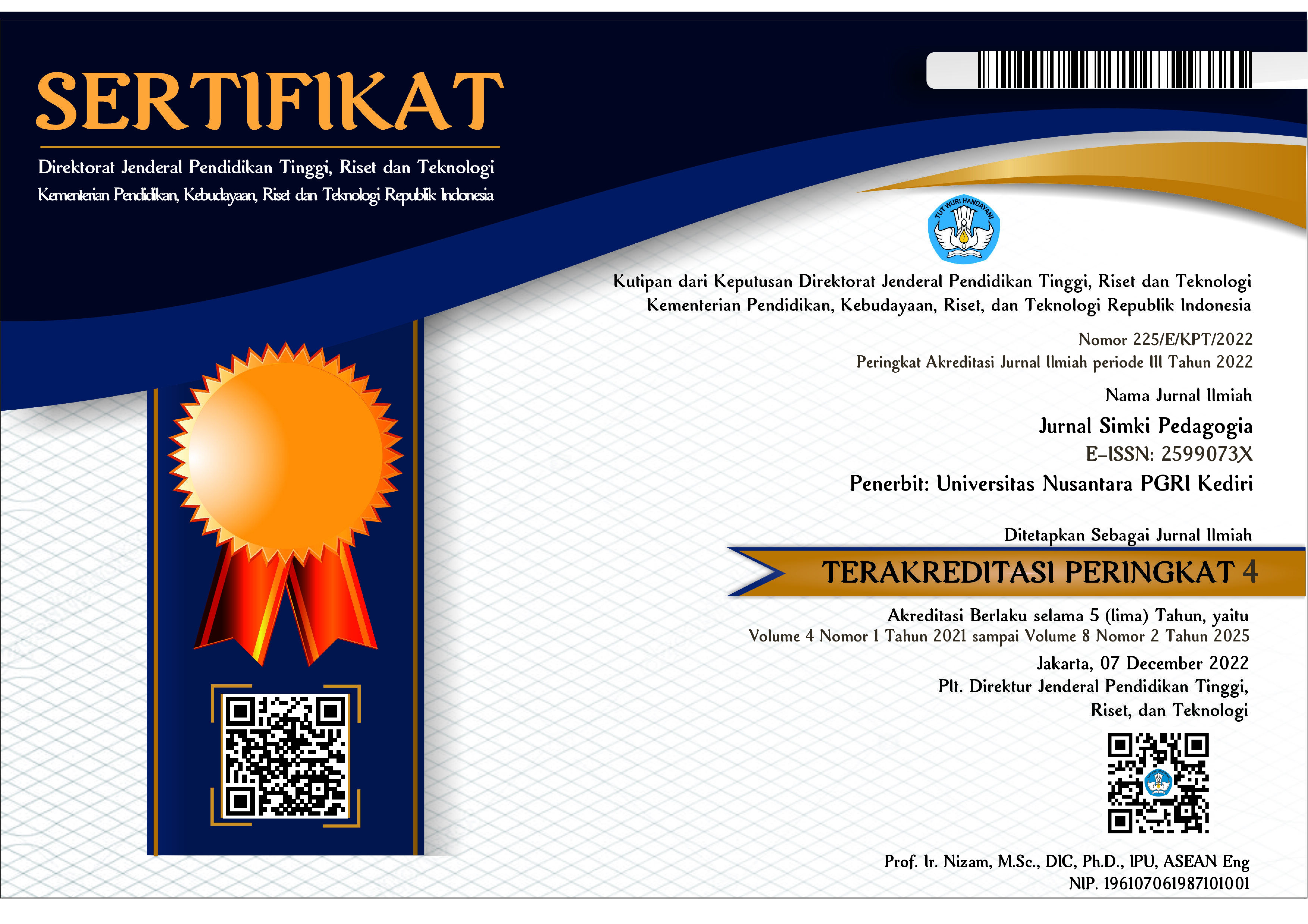Analisis Bibliometrik dengan VOSViewer: Studi Artificial Intelegence dalam Pendidikan
 Abstract views: 1319
,
Abstract views: 1319
,
 PDF (Bahasa Indonesia) downloads: 2573
PDF (Bahasa Indonesia) downloads: 2573
Abstract
The aim of this study was to explore trends in artificial intelligence research in education over the past 20 years. The method used to explore research trends is literature review through bibliometric analysis. The results of bibliometric analysis identify the core research or authors, as well as their relationships, by covering all related publications or specific fields. Publications related to artificial intelligence in education from 2003-2023 are taken from international journals indexed by Google Scholar. Research trends of artificial intelligence in education are visualized using the Vosviewer program. The results showed that the trend of artificial intelligence research in education is vulnerable in the last 20 years, namely artificial intelligence, future trends, educational programs, databases, students and technology.
Downloads
References
Barr, V., & Stephenson, C. (2011). Bringing computational thinking to K-12: What is involved and what is the role of the computer science education community? Acm Inroads. https://doi.org/10.1145/1929887.1929905
Beauchamp, C., & Thomas, L. (2009). Understanding teacher identity: An overview of issues in the literature and implications for teacher education. Cambridge Journal of Education. https://doi.org/10.1080/03057640902902252
Busro, B., Mailana, A., & Sarifudin, A. (2021). Pendidikan Islam dalam Publikasi Internasional : Analisis Bibliometrik pada Database Scopus. 10(01), 413–426.
Collins, A., & Halverson, R. (2018). Rethinking education in the age of technology: The digital revolution and schooling in America. books.google.com. https://books.google.com/books?hl=en&lr=&id=eRhWDwAAQBAJ&oi=fnd&pg=PP1&dq=ai+in+education&ots=UkTRmhistt&sig=96GkTIqHh8tynRJHhM_SclfyARk
Cropley, A. (2015). Creativity in education and learning: A guide for teachers and educators. taylorfrancis.com. https://doi.org/10.4324/9780203826270
Darling-Hammond, L. (2017). Teacher education around the world: What can we learn from international practice? European Journal of Teacher Education, 40(3), 291–309.
Effendy, F., Gaffar, V., Hurriyati, R., & Hendrayati, H. (2021). Analisis Bibliometrik Perkembangan Penelitian Penggunaan Pembayaran Seluler Dengan Vosviewer. Jurnal Interkom: Jurnal Publikasi Ilmiah Bidang Teknologi Informasi Dan Komunikasi, 16(1), 10–17. https://doi.org/10.35969/interkom.v16i1.83
Elena Y. Barakina, Anna V. Popova, Svetlana S. Gorokhova, A. S. V. (2021). Digital Technologies and Artificial Intelligence Technologies in Education. 10(2), 285–296. https://doi.org/10.13187/ejced.2021.2.285
Jobin, A., Ienca, M., & Vayena, E. (2019). The global landscape of AI ethics guidelines. Nature Machine Intelligence. https://www.nature.com/articles/s42256-019-0088-2
Lichtman, M. (2012). Qualitative research in education: A user’s guide. books.google.com. https://books.google.com/books?hl=en&lr=&id=ec9yAwAAQBAJ&oi=fnd&pg=PR5&dq=ai+in+education&ots=roWF7_zqhf&sig=7UEOn-NLeNZMf-Ph7pZEsIKkV0E
Luh Putu Ary Sri Tjahyanti, Putu Satya Saputra, M. S. G. (2022). PERAN ARTIFICIAL INTELLIGENCE ( AI ) UNTUK MENDUKUNG PEMBELAJARAN DI MASA PANDEMI COVID-19. 1(1), 15–21.
Merriam, S. B., & Baumgartner, L. M. (2020). Learning in adulthood: A comprehensive guide. books.google.com. https://books.google.com/books?hl=en&lr=&id=59nIDwAAQBAJ&oi=fnd&pg=PT6&dq=ai+in+education&ots=YF8eeYQsCe&sig=hejkVRSbvkGqn23N68vzh11h358
Negnevitsky, M. (2005). Artificial intelligence: a guide to intelligent systems. Pearson education.
Psacharopoulos, G., & Patrinos, H. A. (2018). Returns to investment in education: a decennial review of the global literature. Education Economics. https://doi.org/10.1080/09645292.2018.1484426
Romero, C., & Ventura, S. (2007). Educational data mining: A survey from 1995 to 2005. Expert Systems with Applications. https://www.sciencedirect.com/science/article/pii/S0957417406001266
Romero, C., Ventura, S., & García, E. (2008). Data mining in course management systems: Moodle case study and tutorial. Computers &education. https://www.sciencedirect.com/science/article/pii/S0360131507000590
Russel, S., & Norvig, P. (2013). Artificial intelligence: a modern approach. Pearson Education Limited London.
Russell, S. J. (2010). Artificial intelligence a modern approach. scholar.alaqsa.edu.ps. https://scholar.alaqsa.edu.ps/9195/1/Artificial Intelligence A Modern Approach %283rd Edition%29.pdf %28 PDFDrive %29.pdf
Samuel de Oliveira Durso, E. P. A. (2022). ARTIFICIAL INTELLIGENCE IN DISTANCE EDUCATION : A SYSTEMATIC LITERATURE REVIEW OF BRAZILIAN STUDIES. 7864, 14. https://doi.org/https://doi.org/10.33225/pec/22.80.679
Schoenfeld, A. H. (2016). Learning to think mathematically: Problem solving, metacognition, and sense making in mathematics (Reprint). Journal of Education. https://doi.org/10.1177/002205741619600202
Shihui Feng, N. L. (2021). Mapping artificial intelligence in education research: A network‐based keyword analysis. … Journal of Artificial Intelligence in Education, 27. https://doi.org/10.1007/s40593-021-00244-4
Singh, H. (2021). Building effective blended learning programs. Challenges and Opportunities for the Global …. https://www.igi-global.com/chapter/building-effective-blended-learning-programs/277742
Squire, K., & Jenkins, H. (2003). Harnessing the power of games in education. Insight. https://www.academia.edu/download/68325707/digital_20gaming_20education.pdf
Stahl, G., Koschmann, T. D., & Suthers, D. D. (2006). CSCL: An historical perspective. scholarspace.manoa.hawaii.edu. https://scholarspace.manoa.hawaii.edu/bitstream/10125/22870/4/CSCL_German.pdf
Stone, P., Brooks, R., Brynjolfsson, E., Calo, R., & ... (2022). Artificial intelligence and life in 2030: the one hundred year study on artificial intelligence. ArXiv Preprint ArXiv …. https://arxiv.org/abs/2211.06318
Talan, T. (2021). Artificial Intelligence in Education : A Bibliometric Study. International Journal of Research in Education and Science (IJRES), 7(3), 822-837, 17. https://doi.org/https://doi.org/10.46328/ijres.2409
Uunona, G. N., & Goosen, L. (2023). Leveraging Ethical Standards in Artificial Intelligence Technologies: A Guideline for Responsible Teaching and Learning Applications. … Technologies in Health Education and …. https://www.igi-global.com/chapter/leveraging-ethical-standards-in-artificial-intelligence-technologies/320386
van Eck, N. J., & Waltman, L. (2017). Citation-based clustering of publications using CitNetExplorer and VOSviewer. Scientometrics, 111(2), 1053–1070. https://doi.org/10.1007/s11192-017-2300-7
Wenger, E. (2014). Artificial intelligence and tutoring systems: computational and cognitive approaches to the communication of knowledge. books.google.com. https://books.google.com/books?hl=en&lr=&id=6ymjBQAAQBAJ&oi=fnd&pg=PP1&dq=ai+in+education&ots=--vwf7PqOf&sig=ZF4U5U9WKKTM03ui5qdmmpiqEHQ
Copyright (c) 2023 Sri Astuti Iriyani, Heri Sopian Hadi, Marlina, Elyakim Nova Supriyedi Patty, Irhas

This work is licensed under a Creative Commons Attribution 4.0 International License.

Jurnal Simki Pedagogia : https://jiped.org/index.php/JSP/index is licensed under a Creative Commons Attribution 4.0 International License.
















